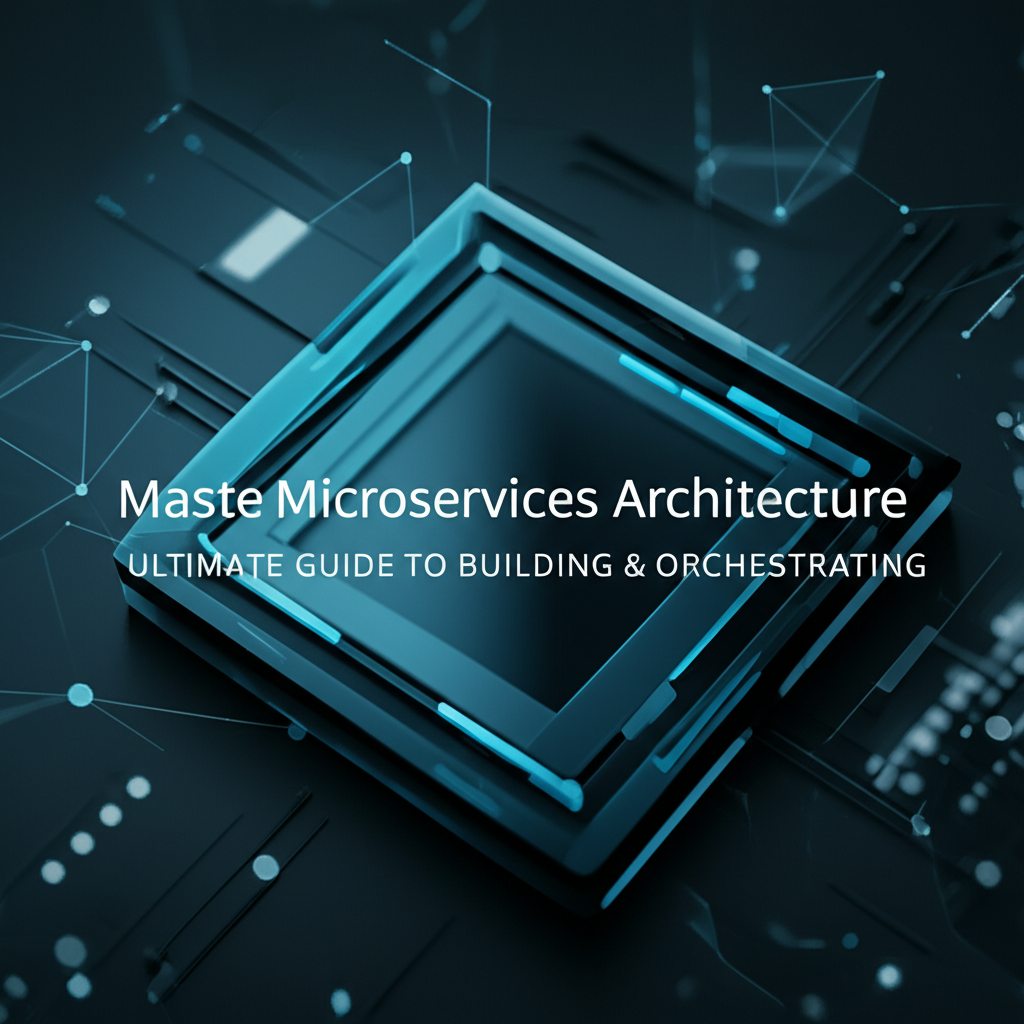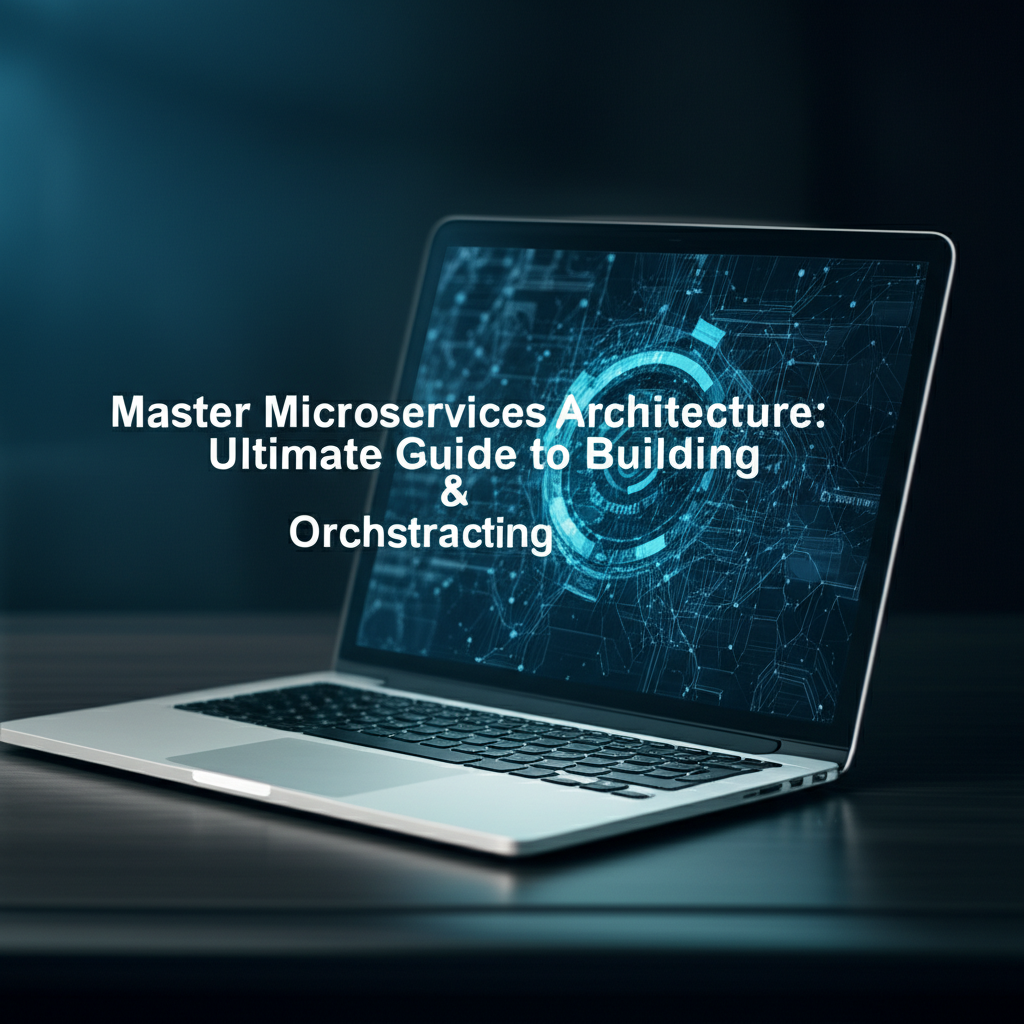Master Microservices Architecture: Ultimate Guide to Building & Orchestrating

Microservices architecture has emerged as a dominant force in the world of software development, offering a flexible and scalable approach to building modern applications. This guide will delve into the intricacies of microservices architecture, focusing on key components such as the API gateway, OpenAPI, and API governance. We will explore how these elements work together to create robust and efficient microservices-based applications. Let's embark on this journey to master microservices architecture.
Understanding Microservices Architecture
What is Microservices Architecture?
Microservices architecture is an approach to developing a single application as a collection of loosely coupled services. Each service is a small, independent, and self-contained application that can be developed, deployed, and scaled independently. This architecture promotes the development of scalable, resilient, and maintainable applications.
Key Characteristics of Microservices
- Loosely Coupled Services: Each service operates independently, communicating through lightweight mechanisms such as HTTP/REST or messaging queues.
- Self-Contained: Each service has its own database, business logic, and data model.
- Scalability: Services can be scaled independently to meet varying demand.
- Autonomous Deployment: Each service can be deployed and updated independently without affecting other services.
- Continuous Deployment: Microservices architecture enables continuous deployment and delivery, allowing for rapid iteration and innovation.
The Role of API Gateway in Microservices
What is an API Gateway?
An API gateway is a single entry point into a microservices architecture. It acts as a proxy server, routing requests to the appropriate microservice and providing a unified interface for all services. The API gateway also handles authentication, authorization, rate limiting, and other cross-cutting concerns.
Why Use an API Gateway?
- Single Entry Point: Simplifies the communication between clients and microservices.
- Security: Centralizes security policies and authentication mechanisms.
- Rate Limiting: Protects microservices from being overwhelmed by excessive traffic.
- Caching: Improves performance by caching frequently accessed data.
- Analytics and Monitoring: Provides insights into API usage and performance.
OpenAPI: The Language of Microservices
What is OpenAPI?
OpenAPI is a specification for describing RESTful APIs. It allows developers to create a comprehensive and machine-readable description of their APIs. This description can be used to generate documentation, client libraries, and even API gateways.
Why Use OpenAPI?
- Documentation: Provides a single source of truth for API documentation.
- Automation: Enables the automated generation of client libraries and API gateways.
- Interoperability: Ensures that APIs are consistent and predictable.
APIPark is a high-performance AI gateway that allows you to securely access the most comprehensive LLM APIs globally on the APIPark platform, including OpenAI, Anthropic, Mistral, Llama2, Google Gemini, and more.Try APIPark now! 👇👇👇
API Governance: Ensuring Consistency and Compliance
What is API Governance?
API governance is the process of managing and governing APIs within an organization. It ensures that APIs are consistent, secure, and compliant with organizational policies and standards.
Key Components of API Governance
- Policy Management: Establishes and enforces policies for API design, development, and deployment.
- Lifecycle Management: Manages the entire lifecycle of APIs, from design to retirement.
- Compliance Management: Ensures that APIs comply with regulatory requirements and industry standards.
- Security Management: Protects APIs from threats and vulnerabilities.
Building and Orchestrating Microservices
Designing Microservices
When designing microservices, it is important to consider the following principles:
- Single Responsibility: Each service should have a single responsibility and should be independently deployable.
- Domain-Driven Design: Align services with business domains.
- Loose Coupling: Services should communicate through lightweight mechanisms.
- Scalability: Design services to be scalable independently.
Deploying Microservices
Deploying microservices requires a robust infrastructure. Consider the following aspects:
- Containerization: Use containerization technologies like Docker to package and deploy services.
- Orchestration: Use orchestration tools like Kubernetes to manage the deployment and scaling of services.
- Monitoring: Implement monitoring solutions to track the performance and health of services.
Orchestrating Microservices
Orchestrating microservices involves managing the interactions between services. Consider the following strategies:
- API Gateway: Use an API gateway to route requests to the appropriate service.
- Service Discovery: Implement service discovery to dynamically discover and register services.
- Circuit Breaker: Use circuit breakers to prevent cascading failures.
APIPark: The Open Source AI Gateway & API Management Platform
Introduction to APIPark
APIPark is an open-source AI gateway and API management platform designed to simplify the development and management of microservices-based applications. It provides a comprehensive set of features for API governance, orchestration, and monitoring.
Key Features of APIPark
- Quick Integration of 100+ AI Models: APIPark offers the capability to integrate a variety of AI models with a unified management system for authentication and cost tracking.
- Unified API Format for AI Invocation: It standardizes the request data format across all AI models, ensuring that changes in AI models or prompts do not affect the application or microservices.
- Prompt Encapsulation into REST API: Users can quickly combine AI models with custom prompts to create new APIs, such as sentiment analysis, translation, or data analysis APIs.
- End-to-End API Lifecycle Management: APIPark assists with managing the entire lifecycle of APIs, including design, publication, invocation, and decommission.
- API Service Sharing within Teams: The platform allows for the centralized display of all API services, making it easy for different departments and teams to find and use the required API services.
How APIPark Can Help You
APIPark can help you achieve the following:
- Simplify API Management: APIPark provides a unified interface for managing APIs, making it easier to design, develop, and deploy APIs.
- Improve API Security: APIPark offers robust security features to protect your APIs from unauthorized access and threats.
- Enhance API Performance: APIPark provides caching and load balancing capabilities to improve the performance of your APIs.
- Ensure API Compliance: APIPark helps you ensure that your APIs comply with organizational policies and standards.
Conclusion
Microservices architecture offers a flexible and scalable approach to building modern applications. By understanding the key components of microservices architecture, such as the API gateway, OpenAPI, and API governance, you can build robust and efficient microservices-based applications. APIPark can help you simplify the development and management of microservices-based applications, ensuring that your APIs are secure, performant, and compliant with organizational policies.
FAQs
Q1: What is the difference between a microservice and a monolithic application? A1: A monolithic application is a single, cohesive application that is tightly coupled and runs on a single server. In contrast, a microservice architecture breaks down an application into a collection of loosely coupled services that operate independently.
Q2: What is the role of an API gateway in microservices architecture? A2: An API gateway is a single entry point into a microservices architecture. It routes requests to the appropriate microservice and provides a unified interface for all services. It also handles security, authentication, and other cross-cutting concerns.
Q3: What is OpenAPI, and why is it important? A3: OpenAPI is a specification for describing RESTful APIs. It allows developers to create a comprehensive and machine-readable description of their APIs. This description can be used to generate documentation, client libraries, and even API gateways.
Q4: What is API governance, and why is it important? A4: API governance is the process of managing and governing APIs within an organization. It ensures that APIs are consistent, secure, and compliant with organizational policies and standards. This helps organizations maintain control over their APIs and ensure that they meet business requirements.
Q5: How can APIPark help me with microservices architecture? A5: APIPark is an open-source AI gateway and API management platform designed to simplify the development and management of microservices-based applications. It provides a comprehensive set of features for API governance, orchestration, and monitoring, making it easier to design, develop, and deploy APIs.
🚀You can securely and efficiently call the OpenAI API on APIPark in just two steps:
Step 1: Deploy the APIPark AI gateway in 5 minutes.
APIPark is developed based on Golang, offering strong product performance and low development and maintenance costs. You can deploy APIPark with a single command line.
curl -sSO https://download.apipark.com/install/quick-start.sh; bash quick-start.sh

In my experience, you can see the successful deployment interface within 5 to 10 minutes. Then, you can log in to APIPark using your account.

Step 2: Call the OpenAI API.



